Overview: The situation in central Europe is still intense but it appears top US, European and Polish officials are more reluctant than some market participants to attribute the darkest of intentions and paint extreme narratives. The Polish zloty has recovered around 1.3% today and other central European currencies are also trading firmer to lead the emerging market currencies. The US dollar is broadly weaker against the G10 currencies. The large Asia Pacific bourses pared recent gains, and Europe’s Stoxx 600 is threatening to end a four-day advance. US equity futures are trading with a slightly firmer bias. European benchmark 10-year yields are softer, with Italy off 5 bp, but most are around 2-3 bp lower. The 10-year US Treasury yield is nearly two basis points higher, slightly below 3.80%. Gold is firm inside yesterday’s range and is knocking on the $1783-5 area. A 5.8 mln-barrel drawdown of US oil inventories, reportedly estimated by API would be the largest in three months if confirmed by the EIA. December WTI is trading quietly around $87 a barrel. US natgas is giving back yesterday’s 1.7% gain, while the EU is considering a cap on the Dutch TFF benchmark. It is off about 1.25% after surging by nearly a quarter over the past two sessions. Iron ore's recovery continues. It rose by about 2.65% today, its fourth consecutive advance. It has now risen 11 of the past 12 sessions for a little more than 26% amid optimism over China’s recent initiative in the property market and better targeting of its Covid restrictions. Covid cases are still surging in China and there are more than 20k reported infections, the most since April. December copper is nursing a small loss. It has not risen this week as it consolidates the gains scored in the last four sessions of last week. December wheat is snapping a three-day advance with a 2% loss today amid reports that new Ukraine shipments will be allowed.
Asia Pacific
The market wants to believe. It wants to believe that the more focused zero-Covid efforts is really a pivot, even though Chinese officials deny it and virus cases are surging. It wants to believe that the 16-point plan to support the real estate market will achieve what no other country appears to have been able to do, namely arrest the implosion of a housing market bubble, years in the making, with absorbing the excesses. The market wants to believe that a three-hour face-to-face between Biden and Xi have put the superpower relationship on a higher track, though outside of some more meetings, it is not clear that Washington or Beijing's behavior will change one iota. Yes, talking is often better than not, but it is not the same as material actions. Talks may help minimize misunderstandings but does little to alter the genuine conflict of national interests that the political elite of both countries perceive.
Earlier this month, the BOJ reported that its holdings of a particular 10-year JGB (368th issue, the most recent offering) exceed the amount that actually existed. Huh? How can that be? The conundrum has been resolved. It turns out that the BOJ lends out the security and have been buying the bonds in its open market operations, resulting in what the Nikkei called a "double booking of the same instrument." New 368th bonds were sold on November 1, and the BOJ's holdings slipped back below 100%. However, market participants keep wagering that the BOJ will have to suspend or change its Yield Curve Control and sell the bond short. The BOJ seems committed to the 0.25% cap. If these skeptics continue to resist the YCC, and global bond yields exert upward pressure on the JGB, the BOJ will persist and again hold more than 100%. The last auction of the 368th bond will be on December 1. Reports suggest that the BOJ is also uncomfortable holding more than 100% of the issue. The BOJ bought about JPY23 trillion (~$165 bln) of JGBs in the last two months, which is about the same amount purchased in June and July.
The dollar is trading quietly within yesterday's range against the Japanese yen (~JPY137.70-JPY140.60). Yesterday's low was a new low since August, but for the most part, so far, this week, the greenback is holding above the pre-weekend low near JPY138.50 but struggling to hold above the JPY140 area. The Australian dollar wobbled on yesterday's Polish developments but quickly returned to the upper end of the range, a little shy of $0.6800. News that wages rose 3.1% year-over-year in Q3, the most in at least a decade failed to have much impact on the Aussie, which is consolidating in a narrow range (about $0.6730-$0.6785). Nor did it change market expectations much for the December 6 policy decision, where the market is pricing in about a 60% chance of a quarter-point hike ahead of tomorrow's employment report. The greenback is trading firmer against the Chinese yuan. After reaching a low near CNY7.0250 yesterday, the dollar recovered to CNY7.0885 today, a little below the high set on Monday (~CNY7.0930). It is poised for its first gain in five sessions. China's 10-year bond yield edged up to about 2.85%, the highest this year, though there is some speculation that the loan prime rates may be shaved next week (November 20). The PBOC set the dollar's reference rate at CNY7.0363, which matched the median projection in Bloomberg's survey.
Europe
The UK's October inflation surprised on the upside. The consumer price index jumped to 11.1%. Economists had looked for 10.7%, while the Bank of England had warned of 10.9% after 10.1% in September. The core rate held steady at 6.5%, defying some expectations for a small decline. Producer prices (input and output) were firmer than expected and the September series was revised higher. The swaps market is divided between a 50 bp and 75 bp hike when the BOE meets on December 15, unchanged from a week ago. Tomorrow, Chancellor Hunt delivers the long-awaited budget, and this may inject volatility in sterling and the Gilt market.
The Spanish government has been negotiating with banks for two months about giving some relief to households facing acute difficulty in servicing the mortgages. Roughly 75% of Spanish households are homeowners, and of those around three-quarters have variable rate mortgages. Those rates have soared. Given the rise of the benchmark yields, many of these variable rate mortgage rates have risen sharply. The banks want some forbearance too and do not want to be required to boost loan losses reserves. An agreement of a very targeted program that extends the mortgages for a few years may be close, with some expecting an announcement this week.
The Federal Reserve's balance sheet peaked in April at $8.965 trillion. As of last week, it had fallen by almost $290 bln. The ECB's balance sheet peaked late June at 8.836 trillion euros and has fallen by an inconsequential 72 bln euros through last week. Reports suggest it may discuss the modalities of unwinding it next month. Many ECB critics fault it for being too slow to raise rates and begin QT. However, it will soon surpass the Fed's efforts on its balance sheet. The ECB changed the terms of the long-term loans, giving many banks powerful incentive to repay the loans early. Its balance sheet shows these loans are worth about 2.1 trillion euros. The median estimate in Bloomberg' survey expects 600 bln euros to be repaid this month and another 285 bln euros repaid in December. This month's early repayment commitment is expected to be announced ahead of the weekend. By the middle of next year, when the swaps market looks for the ECB to finish its hikes, which President Lagarde says QT can begin, around 3/4 of the TLTROs are expected to have been repaid. The larger the pre-payment, we suspect, the greater the discussion about the impact on the ECB's tightening path.
The euro dropped two cents yesterday on the Polish news, from about $1.0480 to $1.0280 but quickly rebounded as the market made its quick judgment as is its wont. It settled near $1.0350 and has not traded below $1.0330 today. It has traded back a little above the 200-day moving average ($1.0425) to almost $1.0440. The intraday momentum indicators are stretched ahead of the start of the North American session. The price action, and the dip buying seems to reflect the turn in market psychology. On the upside, the next important chart area is near $1.0515, the halfway mark of this year's range. Sterling reached almost $1.2030 yesterday, the highest since mid-August, and just short of the middle of this year's range (~ $1.2050). It had fallen a little below $1.18 yesterday on the central European developments and settled around $1.1865. It is making session highs in the European morning near $1.1940 but is also stretching the intraday momentum indicators. The euro surged from around PLN4.68 yesterday and did not stop until it reached nearly PLN4.7850 today, but as the more scary and extreme scenarios ease, the euro has returned to almost PLN4.69.
America
Our timing for noting that the monthly changes in US CPI and PPI are not correlated could not have been at a worse time as the October PPI surprised on the downside. The math is still right of course, but here the psychology is important. The softer PPI was seen as a confirmation that US inflation has turned. The psychological impact is more important than the material impact. Attention reverts to the real sector today with US October retail sales and industrial output figures. Shortly after the reports, the Atlanta Fed will update its GDP Tracker, which stood at 4% for Q4 in the middle of last week. Retail sales will be flattered by the stronger than expected auto sales and higher gasoline prices, but the core measure, which excludes autos, gasoline, building materials, and food services, which is used in some GDP models, rose by 0.3%, which matches the Q3 average. The year-to-date average is 0.8%, and while the GDP was contracting in H1, this nominal retail sales rose by an average of 1.2% and 0.8% in Q1 and Q2, respectively.
Canada reports October housing starts and CPI today. Housing starts in September rose 10.8% to their highest level since March 2021. It is a volatile series and an 8.0%-8.5% pullback is anticipated. Such a decline would still leave them around 15% higher than a year ago. The CPI is a bigger draw. A large monthly gain of 0.8% is expected by the median forecast in Bloomberg's survey, but due to the base effect, the year-over-year rate may be unchanged at 6.9%. The headline year-over-year rate has declined for the previous three months after peaking at 8.1% in June. The underlying core rates are expected to remain firm. The swaps market shows the market split between a 25 bp and 50 bp hike when the Bank of Canada meets on December 7.
The US dollar traded on both sides of Monday's range against the Canadian dollar yesterday, but the close was neutral. It is come back better offered today and is barely holding above yesterday's low (~CAD1.3225). A break of CAD1.3200 signals the next leg down after nesting for the past few sessions. Initial support may be found around CAD1.3150, but the measuring objective of the large head and shoulders pattern is CAD1.30. The greenback made a marginal new 2.5-year low against the Mexican peso yesterday, slightly above MXN19.25. It settled near MXN19.3730 and is hovering around there is Europe. The intraday momentum indicators suggest the US dollar may trade higher in early North America. The MXN19.40-MXN19.45 area may offer the nearby cap.


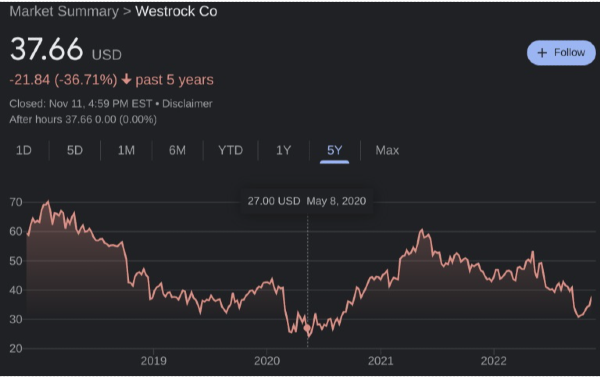

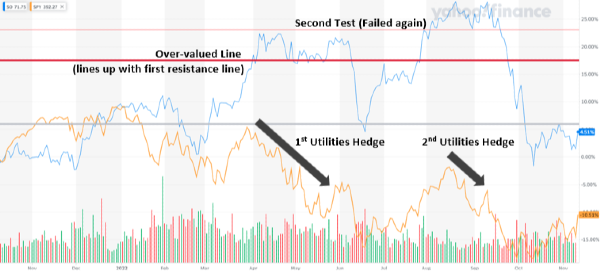


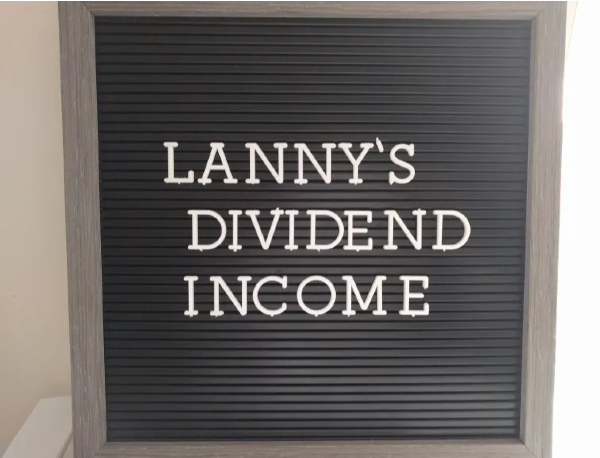

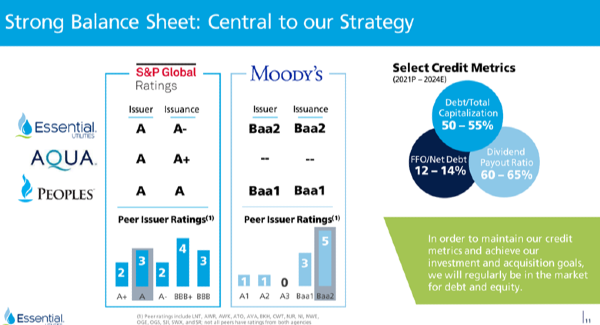


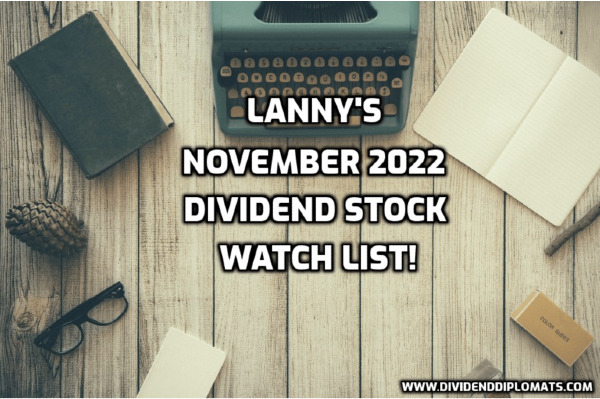

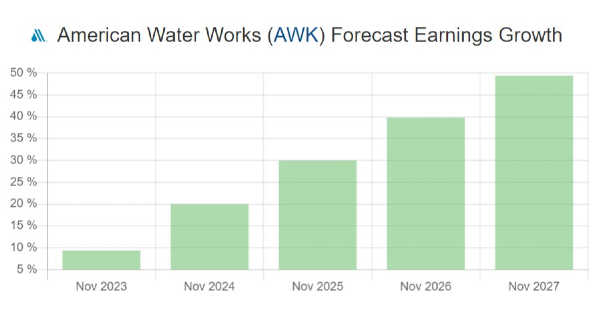
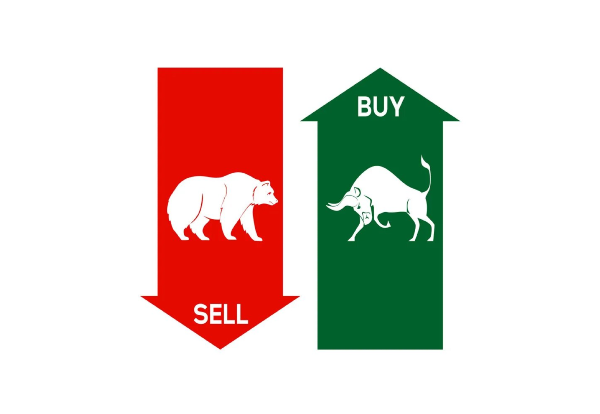












Overview: The situation in central Europe is still intense but it appears top US, European and Polish officials are more reluctant than some market participants to attribute the darkest of intentions and paint extreme narratives. The Polish zloty has recovered around 1.3% today and other central European currencies are also trading firmer to lead the emerging market currencies. The US dollar is broadly weaker against the G10 currencies. The large Asia Pacific bourses pared recent gains, and Europe’s Stoxx 600 is threatening to end a four-day advance. US equity futures are trading with a slightly firmer bias. European benchmark 10-year yields are softer, with Italy off 5 bp, but most are around 2-3 bp lower. The 10-year US Treasury yield is nearly two basis points higher, slightly below 3.80%. Gold is firm inside yesterday’s range and is knocking on the $1783-5 area. A 5.8 mln-barrel drawdown of US oil inventories, reportedly estimated by API would be the largest in three months if confirmed by the EIA. December WTI is trading quietly around $87 a barrel. US natgas is giving back yesterday’s 1.7% gain, while the EU is considering a cap on the Dutch TFF benchmark. It is off about 1.25% after surging by nearly a quarter over the past two sessions. Iron ore's recovery continues. It rose by about 2.65% today, its fourth consecutive advance. It has now risen 11 of the past 12 sessions for a little more than 26% amid optimism over China’s recent initiative in the property market and better targeting of its Covid restrictions. Covid cases are still surging in China and there are more than 20k reported infections, the most since April. December copper is nursing a small loss. It has not risen this week as it consolidates the gains scored in the last four sessions of last week. December wheat is snapping a three-day advance with a 2% loss today amid reports that new Ukraine shipments will be allowed.
Asia Pacific
The market wants to believe. It wants to believe that the more focused zero-Covid efforts is really a pivot, even though Chinese officials deny it and virus cases are surging. It wants to believe that the 16-point plan to support the real estate market will achieve what no other country appears to have been able to do, namely arrest the implosion of a housing market bubble, years in the making, with absorbing the excesses. The market wants to believe that a three-hour face-to-face between Biden and Xi have put the superpower relationship on a higher track, though outside of some more meetings, it is not clear that Washington or Beijing's behavior will change one iota. Yes, talking is often better than not, but it is not the same as material actions. Talks may help minimize misunderstandings but does little to alter the genuine conflict of national interests that the political elite of both countries perceive.
Earlier this month, the BOJ reported that its holdings of a particular 10-year JGB (368th issue, the most recent offering) exceed the amount that actually existed. Huh? How can that be? The conundrum has been resolved. It turns out that the BOJ lends out the security and have been buying the bonds in its open market operations, resulting in what the Nikkei called a "double booking of the same instrument." New 368th bonds were sold on November 1, and the BOJ's holdings slipped back below 100%. However, market participants keep wagering that the BOJ will have to suspend or change its Yield Curve Control and sell the bond short. The BOJ seems committed to the 0.25% cap. If these skeptics continue to resist the YCC, and global bond yields exert upward pressure on the JGB, the BOJ will persist and again hold more than 100%. The last auction of the 368th bond will be on December 1. Reports suggest that the BOJ is also uncomfortable holding more than 100% of the issue. The BOJ bought about JPY23 trillion (~$165 bln) of JGBs in the last two months, which is about the same amount purchased in June and July.
The dollar is trading quietly within yesterday's range against the Japanese yen (~JPY137.70-JPY140.60). Yesterday's low was a new low since August, but for the most part, so far, this week, the greenback is holding above the pre-weekend low near JPY138.50 but struggling to hold above the JPY140 area. The Australian dollar wobbled on yesterday's Polish developments but quickly returned to the upper end of the range, a little shy of $0.6800. News that wages rose 3.1% year-over-year in Q3, the most in at least a decade failed to have much impact on the Aussie, which is consolidating in a narrow range (about $0.6730-$0.6785). Nor did it change market expectations much for the December 6 policy decision, where the market is pricing in about a 60% chance of a quarter-point hike ahead of tomorrow's employment report. The greenback is trading firmer against the Chinese yuan. After reaching a low near CNY7.0250 yesterday, the dollar recovered to CNY7.0885 today, a little below the high set on Monday (~CNY7.0930). It is poised for its first gain in five sessions. China's 10-year bond yield edged up to about 2.85%, the highest this year, though there is some speculation that the loan prime rates may be shaved next week (November 20). The PBOC set the dollar's reference rate at CNY7.0363, which matched the median projection in Bloomberg's survey.
Europe
The UK's October inflation surprised on the upside. The consumer price index jumped to 11.1%. Economists had looked for 10.7%, while the Bank of England had warned of 10.9% after 10.1% in September. The core rate held steady at 6.5%, defying some expectations for a small decline. Producer prices (input and output) were firmer than expected and the September series was revised higher. The swaps market is divided between a 50 bp and 75 bp hike when the BOE meets on December 15, unchanged from a week ago. Tomorrow, Chancellor Hunt delivers the long-awaited budget, and this may inject volatility in sterling and the Gilt market.
The Spanish government has been negotiating with banks for two months about giving some relief to households facing acute difficulty in servicing the mortgages. Roughly 75% of Spanish households are homeowners, and of those around three-quarters have variable rate mortgages. Those rates have soared. Given the rise of the benchmark yields, many of these variable rate mortgage rates have risen sharply. The banks want some forbearance too and do not want to be required to boost loan losses reserves. An agreement of a very targeted program that extends the mortgages for a few years may be close, with some expecting an announcement this week.
The Federal Reserve's balance sheet peaked in April at $8.965 trillion. As of last week, it had fallen by almost $290 bln. The ECB's balance sheet peaked late June at 8.836 trillion euros and has fallen by an inconsequential 72 bln euros through last week. Reports suggest it may discuss the modalities of unwinding it next month. Many ECB critics fault it for being too slow to raise rates and begin QT. However, it will soon surpass the Fed's efforts on its balance sheet. The ECB changed the terms of the long-term loans, giving many banks powerful incentive to repay the loans early. Its balance sheet shows these loans are worth about 2.1 trillion euros. The median estimate in Bloomberg' survey expects 600 bln euros to be repaid this month and another 285 bln euros repaid in December. This month's early repayment commitment is expected to be announced ahead of the weekend. By the middle of next year, when the swaps market looks for the ECB to finish its hikes, which President Lagarde says QT can begin, around 3/4 of the TLTROs are expected to have been repaid. The larger the pre-payment, we suspect, the greater the discussion about the impact on the ECB's tightening path.
The euro dropped two cents yesterday on the Polish news, from about $1.0480 to $1.0280 but quickly rebounded as the market made its quick judgment as is its wont. It settled near $1.0350 and has not traded below $1.0330 today. It has traded back a little above the 200-day moving average ($1.0425) to almost $1.0440. The intraday momentum indicators are stretched ahead of the start of the North American session. The price action, and the dip buying seems to reflect the turn in market psychology. On the upside, the next important chart area is near $1.0515, the halfway mark of this year's range. Sterling reached almost $1.2030 yesterday, the highest since mid-August, and just short of the middle of this year's range (~ $1.2050). It had fallen a little below $1.18 yesterday on the central European developments and settled around $1.1865. It is making session highs in the European morning near $1.1940 but is also stretching the intraday momentum indicators. The euro surged from around PLN4.68 yesterday and did not stop until it reached nearly PLN4.7850 today, but as the more scary and extreme scenarios ease, the euro has returned to almost PLN4.69.
America
Our timing for noting that the monthly changes in US CPI and PPI are not correlated could not have been at a worse time as the October PPI surprised on the downside. The math is still right of course, but here the psychology is important. The softer PPI was seen as a confirmation that US inflation has turned. The psychological impact is more important than the material impact. Attention reverts to the real sector today with US October retail sales and industrial output figures. Shortly after the reports, the Atlanta Fed will update its GDP Tracker, which stood at 4% for Q4 in the middle of last week. Retail sales will be flattered by the stronger than expected auto sales and higher gasoline prices, but the core measure, which excludes autos, gasoline, building materials, and food services, which is used in some GDP models, rose by 0.3%, which matches the Q3 average. The year-to-date average is 0.8%, and while the GDP was contracting in H1, this nominal retail sales rose by an average of 1.2% and 0.8% in Q1 and Q2, respectively.
Canada reports October housing starts and CPI today. Housing starts in September rose 10.8% to their highest level since March 2021. It is a volatile series and an 8.0%-8.5% pullback is anticipated. Such a decline would still leave them around 15% higher than a year ago. The CPI is a bigger draw. A large monthly gain of 0.8% is expected by the median forecast in Bloomberg's survey, but due to the base effect, the year-over-year rate may be unchanged at 6.9%. The headline year-over-year rate has declined for the previous three months after peaking at 8.1% in June. The underlying core rates are expected to remain firm. The swaps market shows the market split between a 25 bp and 50 bp hike when the Bank of Canada meets on December 7.
The US dollar traded on both sides of Monday's range against the Canadian dollar yesterday, but the close was neutral. It is come back better offered today and is barely holding above yesterday's low (~CAD1.3225). A break of CAD1.3200 signals the next leg down after nesting for the past few sessions. Initial support may be found around CAD1.3150, but the measuring objective of the large head and shoulders pattern is CAD1.30. The greenback made a marginal new 2.5-year low against the Mexican peso yesterday, slightly above MXN19.25. It settled near MXN19.3730 and is hovering around there is Europe. The intraday momentum indicators suggest the US dollar may trade higher in early North America. The MXN19.40-MXN19.45 area may offer the nearby cap.
Originally Posted on marctomarket.com